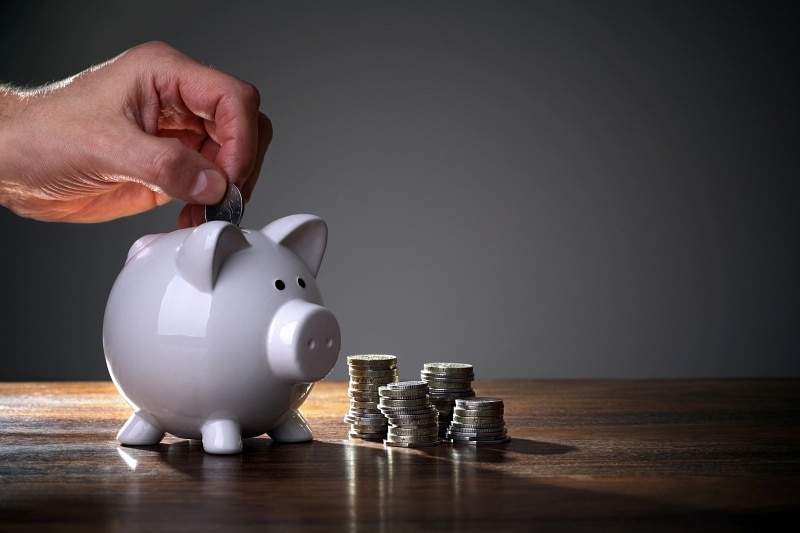The Ultimate Emergency Fund Blueprint for Beginners

In the vast landscape of personal finance, few tools are as crucial, yet often overlooked, as a robust emergency fund. For beginners navigating their financial journey, this fund is not merely an optional savings goal; it is the bedrock of financial security. It’s the difference between weathering an unexpected storm with calm and plunging into a debt spiral with panic. An emergency fund is your financial "insurance policy," ensuring that life's inevitable curveballs—like a sudden job loss, a major car repair, or an unexpected medical bill—don't derail your long-term goals.
This comprehensive blueprint will guide you through the process of building, maintaining, and understanding this vital safety net, designed specifically for those starting from scratch.
Phase 1: Defining Your Emergency Fund
Before you start saving, you need to know exactly what you are saving for and how much. This is about establishing a clear, actionable target.
Step 1: Calculate Your "Survival Number"
An emergency fund is designed to cover essential living expenses, not your entire discretionary spending. You need to determine your minimum monthly outlay.
- Track Your Spending: For one month, meticulously record every single expense. Use a spreadsheet, a budgeting app, or even a simple notebook.
- Separate Needs vs. Wants: Categorize your expenses into two groups:
- Needs (Essentials): Housing (rent/mortgage), essential utilities (water, basic electricity, basic phone/internet), groceries, minimum loan payments, insurance, and transportation costs necessary for work.
- Wants (Discretionary): Dining out, non-essential subscriptions, entertainment, premium cable, luxury shopping.
- Determine the "Bare-Bones" Budget: Sum up only your Needs. This total is your monthly "Survival Number." This is the minimum amount of money you would need to sustain your life if your income suddenly stopped.
Step 2: Set Your Target Goal
While some people suggest a universal number, the size of your fund should reflect your personal circumstances.
- The Mini-Fund (The Starter Goal): Aim for a quick win of $500 to $1,000. This amount is often enough to cover most smaller emergencies (a flat tire, a minor medical co-pay) and provides an immediate psychological boost. Hitting this first goal builds crucial momentum.
- The Full Fund (The Main Goal): Personal finance experts generally recommend saving three to six months of your calculated "Survival Number."
- 3 Months: Good if you have a very stable job, low debt, and a second income source.
- 6 Months: The recommended standard. Excellent for most people, offering a solid buffer for job searches.
- 9-12 Months: Prudent if you are a single-income household, self-employed, have variable income, work in an unstable industry, or have specific dependents (e.g., elderly parents, special needs children).
Example: If your monthly "Survival Number" is $2,500, your goal for a six-month fund would be $15,000.
Phase 2: The Art of Accumulation
Once you have your target, the next challenge is actually putting the money away. Consistency trumps intensity in this phase.
Step 3: "Pay Yourself First" through Automation
Make saving non-negotiable, just like paying a bill.
- Open a Separate Account: Crucially, your emergency fund should not live in the same checking account you use for daily transactions. The saying is: "Out of sight, out of mind." Open a dedicated High-Yield Savings Account (HYSA).
- Why an HYSA? It is separate, earns a better interest rate than a traditional savings account, and is still highly liquid (easy access). The high interest is a bonus, but the main goal is safety and liquidity.
- Automate Your Transfers: Set up an automatic, recurring transfer from your checking account to your HYSA on the day you get paid. Even if it's a small amount—$50, $100, or whatever you can manage—automate it. Consistency is the secret sauce.
Step 4: Find Fuel for Your Fund (The Budget Overhaul)
To accelerate your savings, you need to create a savings surplus. This is where you proactively find money you didn't know you had.
- The "Wants" Reduction: Go back to your spending tracker. Can you temporarily slash your "Wants"? Cancel unused subscriptions, pause dining out, or reduce expensive daily habits (like coffee shop visits). Even cutting $100 a month will put $1,200 into your fund over a year.
- The Windfall Strategy: Commit to saving 100% of any financial "windfalls." This includes tax refunds, work bonuses, unexpected gifts, or even a modest raise. These lump sums can drastically shorten the time it takes to reach your goal.
- Sell Unused Items (The "Quick Cash" Boost): Declutter your home and sell items you no longer need on platforms like local marketplaces or online consignment shops. This is a highly effective way to quickly hit that initial $1,000 Mini-Fund goal.
Step 5: Prioritize the Fund Over Debt (A Balanced Approach)
For many beginners, debt (especially high-interest credit card debt) is a major concern. Where does the fund fit?
- The Debt vs. Fund Dilemma: A common beginner's strategy is to save the $1,000 Mini-Fund first. This protects you from having to use credit cards when a small emergency occurs. Once the Mini-Fund is secure, redirect all extra money toward paying off high-interest debt (typically anything over 10%). After the high-interest debt is gone, shift back to aggressively funding the remainder of your 3-6 month emergency fund. This strategy provides both a safety net and a path to debt freedom.
Phase 3: Maintenance and Discipline
Building the fund is an achievement; maintaining it requires discipline.
Step 6: Know When (and When NOT) to Use It
A core rule of the emergency fund is its restricted purpose. It is only for genuine, life-altering emergencies.
- Acceptable Uses (Genuine Emergencies):
- Job loss (to cover living expenses).
- Major, unexpected car repair necessary for work.
- Unforeseen medical or dental expenses.
- Urgent, non-covered home repairs (e.g., burst pipe, furnace failure).
- Unacceptable Uses (NOT Emergencies):
- A planned vacation or holiday shopping.
- A sale on a new TV or luxury item.
- A down payment on a house (this should be a separate savings goal).
- Paying for an elective surgery.
If you are unsure, ask yourself: "Is this expense unexpected, urgent, and necessary to sustain my life or income?"
Step 7: The Replenishment Rule
If you have to dip into your emergency fund for an approved reason, your absolute first financial priority immediately reverts to replenishing the fund back to its full target amount. Treat the withdrawal like a loan you must repay yourself as quickly as possible. This rule ensures your safety net remains intact for the next unforeseen event.
Step 8: Review and Adjust Regularly
Life changes—and so should your emergency fund. Review your "Survival Number" annually or after any major life event:
- Life Events Requiring an Increase: Marriage, having a child, buying a home, switching to self-employment, or a significant rise in your cost of living.
- Review Interest Rates: Periodically check if your High-Yield Savings Account is still offering a competitive rate. Don't be afraid to move your money if a better, safer option is available.
Conclusion
Building an emergency fund is not a one-time financial trick; it is a fundamental shift in mindset. It replaces financial anxiety with genuine peace of mind. For beginners, the journey may seem long, but by setting a clear "Survival Number," automating your savings, and prioritizing that initial $1,000 goal, you lay a concrete, unshakeable foundation for a lifetime of financial security. Start small, be consistent, and watch your safety net grow—it is the ultimate protection against the unpredictable nature of life.

Related